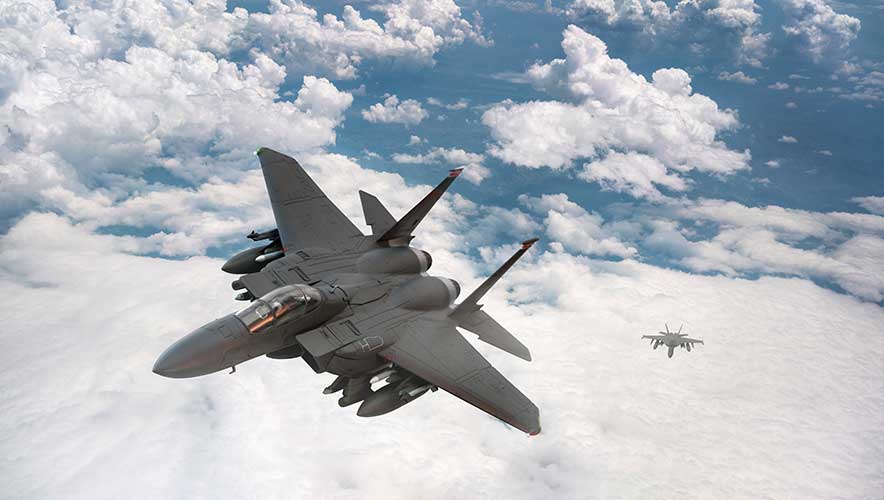Canadian, U.S. Militaries Shoot Down Four High-Altitude Objects in February
North American military forces shot down four different high-altitude objects over North America in the past 10 days, alarming lawmakers and sparking debate about spying and safety, The Washington Post reported.
One of the objects was a Chinese spy balloon, which was shot down off the coast of South Carolina on 4 February. The balloon was first detected in American airspace on 28 January, and it bobbed in and out of U.S. and Canadian airspace for a week until it could be shot down without falling debris posing a risk to lives. The Pentagon said that the object—which was flying at an altitude of 60,000 to 65,000 feet—was being used to gather intelligence about U.S. military installations. China rejected that claim, instead saying that the object was an off-course weather balloon.
U.S. forces are recovering remains of the balloon and the equipment it was carrying from the area of the Atlantic Ocean where it fell. Photos and information released by the U.S. Navy outline the efforts to recover parts of the balloon—which the Pentagon said was about 200 feet tall—and the payload assembly. The balloon had propellers and a rudder, and the payload assembly was approximately the size of three buses, ABC News reported. An official confirmed that the balloon was equipped with self-destruct explosives.
China has strongly objected to the downing of its balloon, and officials alleged that more than 10 U.S. high-altitude balloons have flown in Chinese airspace in the past year without permission, according to the Associated Press. The United States denied the allegation.
On 10 February, a pair of F-22 Raptor fighter jets shot down a high-altitude object over the coast of Alaska. Fighter aircraft pilots confirmed that there was no pilot onboard. Because the object was flying at 40,000 feet, it posed a reasonable threat to civilian air traffic and was shot down, the BBC reported. Helicopters and transport aircraft were dispatched to collect debris from the object, which fell into the Beaufort Sea.
On 11 February, another high-altitude airborne object was shot down over Canada’s Yukon territory. North American Aerospace Defense Command (NORAD) detected the object on 10 February and was monitoring its path. The cylindrical object was downed by Canadian and U.S. aircraft.
On 12 February, a fourth object was shot down over Lake Huron, one of the five Greath Lakes of North America that is between the Canadian Province of Ontario and the U.S. state of Michigan. The object was not a military threat to anything on the ground, officials said, but its altitude (20,000 feet) raised concerns about interference with commercial flights. The recovery of the unmanned object is being jointly handled by the FBI and the Royal Canadian Mounted Police.
The three most recent objects—which have not been categorized by the U.S. military so far, either in terms of type of object (not necessarily balloons, for instance) or origin—posed no kinetic military threat, Pentagon sources told reporters. High-altitude objects are used by a range of companies, countries, and researchers for non-nefarious purposes, and these three were taken down out of an “abundance of caution,” said Melissa Dalton, assistant secretary of defense.
So, why are these objects making the news all of a sudden? It’s partially due to improved air surveillance capabilities and heightened scrutiny on these incidents. NORAD recently readjusted its filters to better spot slow-moving targets operating above a certain altitude, CNN reported. This change occurred after the suspected spy balloon incident sparked debate over the United States’ ability to detect and respond to potentially threatening objects in its airspace. In the past, NORAD prioritized fast-moving targets below a certain altitude, which would allow it to quickly detect planes or missiles and filter out noise from weather balloons and birds.
The increased number of incidents could also be because there are more objects to detect. Former NORAD Director of Operations Retired Major General Scott Clancy speculated that the incursion of aerial objects might be the action of an adversary testing U.S. systems, The Hill reported.
“[The] prudence in making sure that we can recover the objects before attribution is smart,” Clancy told CNN in a TV appearance. “But what I’m saying is: It smells to me, as the guy who was directed to conduct operations to defend North America. I’d be very suspicious, and I’d be on high alert to make sure that all of our adversaries are being counted.”










